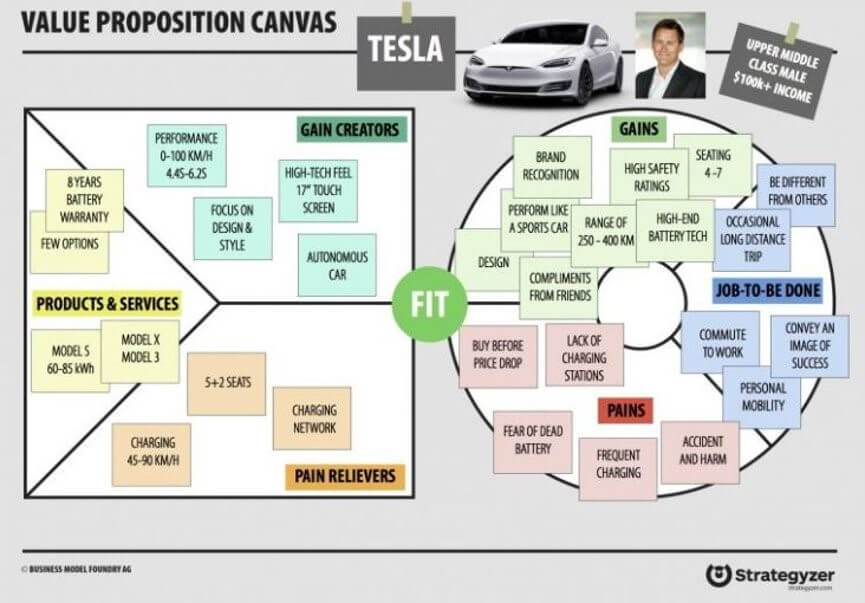Value Proposition Workshop
The Value Proposition Canvas (VPC) by Strategizer allows you to describe your value propositions and the customer in more detail and evaluate the “fit” between the value you intend to create and the expectations your customers have.
The purpose of doing a Value Proposition Design is to create a clear, concise and aligned picture of who the customer is and what value (product or service) you can create for the customer. The Value Proposition Canvas works closely with the Business Model Canvas, where you define the business model.

You can use this map before, during and after developing an in-depth knowledge of your customers. If you use it before, it will highlight what you need to learn about customers and test about value propositions. If you use it after, it will help you analyze and evaluate “fit”.
The VPC can be applied to new and existing value propositions and customers. In both cases it will help you structure your thinking and make your ideas more tangible.
Timeframe
1-8 hours depending on the size of your team and how aligned you are
Number of people
The whole team and other peoples that can help. 1-7 people.
It is good that you have one person that can facilitate the workshop
Materials
Post its & pens, template and wall or similar online
PREPARATION
Start be watching the following videos about value proposition design
Download the template and print it or use a similar digital solution
Read through the following documents
Tips
Make sure you have a rough idea about what you will be working on.
Who is the customer and what are their needs and wants
How we could solve it, your product or service
If you are not aligned in the team you might start the workshop with a framing of the opportunity, idea generation and prioritization.
WORKSHOP
Make sure everyone has read the above documentation.
Have a discussion about the background, context, the problems, or opportunities to solve and who is the customer. If you are not aligned in the team, you might start the workshop with a framing of the opportunity, idea generation and prioritization.
Write down the customer segment (above the circle). We recommend that you try to define it as good as possible. Think of a role at a company in an industry. For example, “HR managers with the governments agencies”. It needs to be someone who is a decision maker and can buy your product or service.
Everyone describes the Customer Profile and writes post it's in the following areas (20-30 minutes)
Customer pains — Describe the bad outcomes, risk, and obstacles related to customer jobs
Customer gains — Describe the outcomes customers want to achieve or the concrete benefits they are seeking, it can be even be hopes, dreams and other positive areas.
Customer jobs — Describe what customers are trying to get done in their work and in their lives. Look for functional or social jobs.
Everyone describes what they have written about the customer profile.
Group post-its that are similar.
Have a discussion and update your canvas to create alignment.
Everyone describes the Value Proposition and writes post its in the following areas (20-30 minutes)
Pain relievers — Describe how your products and services alleviate customer pains
Gain creators — Describe how your products and services create customer gains. Pain Relievers Describe how your products and services alleviate customer pains
Products & Services — List the products and services your value proposition is built around
Everyone describes what they have written about the Value Proposition
Try to see map or see a correlation between the pains and the pain relievers and so on
Group post-its that are similar
Have a discussion and update your canvas to create alignment about the Value Proposition
Have a discussion to create alignment about the overall picture, and conclude the discussion in an aligned sentence (called Ad lib). See the Ad lib template.
Decide you have a good enough prototype to continue to the next step
Example of a created VPC for Tesla

This play is based on test cards from the book, Value Proposition Design by Strategizer
